| May-27-05 | | paladin at large: Remarkable development by Capablanca. White's king is home reading a book and seems not to want to be bothered by the unfolding game. And the e pawn can stay on e2 to keep him company. With 15. Nf3 he gets around to a little more kingside activity. With 22. Rg1 the pressure that white has suddenly becomes clear. |
|
May-27-05
 | | WannaBe: Black should have resigned after 39. Rc7, I would have. |
|
Oct-21-05
 | | Mateo: 27... Qd7? was bad because Capablanca could have won a pawn with 28. Re5! The variation is forced: 28... de 29. Qe5 Rb6 30. Bb2 Rb2 31. Qb2 Qd5 32. Qb8-a7-a6. Of course, this is a very difficult ending to win, but as the position was equal, there was no reason for black to give white a chance to go into this variation. |
|
| Oct-22-05 | | sneaky pete: <Mateo> I don't think 27... Qd7 is bad, what alternative would you suggest? After for instance 27... Qc7 28.Bb2 .. white still wins a pawn, as he does in the game and after 27... g5 (to prevent 28.f4 ..) 28.Rxe5 Qxe5 29.Bb2 .. wins. Black might have tried (after 27... Qd7 28.f3 ..) 28... Rf4/Rf7/Rf8 but against each of these moves 29.Rxe5 .. looks very strong. |
|
Oct-22-05
 | | Mateo: <sneaky pete: <Mateo> I don't think 27... Qd7 is bad, what alternative would you suggest?> I would suggest 27... Qd7 (xd5, f2, g4)with a level game. If 28. Qd4 Rf4 (28... Rf2? 29. Bd6) 29. Re4 Re4 30. Qe4 Qc7 =. If 28. Re5 de 29. Qe5 Rf2 30. Qb8 Kg7 31. Qe5 Kg8 =. If 28. f3 Nc4! = (28... Qd5 29. Bb2). This proves, in my opinion, that 27... Qd7, which should have lost a pawn, was bad. |
|
Oct-22-05
 | | Mateo: 28... Qa4? was bad. Better 28... Qa7 29. Qc3 Nc4!  . . |
|
| Oct-26-05 | | sneaky pete: <Mateo> You mean 27... Qf7 (xd5, f2, g4). That would have been the right move. 27... Qd7? is wrong, as is 27... Qc7 28.Bxd6 .. (not 28.Bb2 .. as I suggested earlier). After 27... Qd7 28.f3 Qa7 (> g1) is interesting, but it still looks better for white and I can imagine Capablanca preferred this to the Queen ending after 28.Rxe5 .. etc. |
|
Oct-27-05
 | | Mateo: <sneaky pete: <Mateo> You mean 27... Qf7> Exactly! |
|
| Jun-08-06 | | Ulhumbrus: On 22 ...Rxf3 ?? 23 Bxd6 !! the Black Queen cannot both stay on the e file and defend g7 |
|
| Jul-18-06 | | paladin at large: In his commentary for the Argentine press, Capablanca admitted to being tired at the time around this game. The opening was not at all planned this way: "In the opening......I had a moment of mental forgetfulness and omitted to play an elementary move; as a result, for a long time I was unable to mobilize my king's rook and knight or to castle........My opponent took advantage to obtain the better position until move 13. He then launched an attack aimed at quickly destroying my position. However, the plan had a serious drawback in that the king's knight was poorly placed, while it also enabled me to develop my own king's knight with relative ease." Capa then faulted van Scheltinga for ignoring the queenside, where Capa developed lasting pressure. Capa noted that it was an exciting game but the play was unsatisfactory because he felt a first rank master would have taken better advantage of Capa's error in the opening. No longer the machine, but nevertheless a fine recovery and interesting game. |
|
| Jul-30-06 | | whatthefat: Capablanca's handling of his king in this game is quite unusual. |
|
| Dec-28-08 | | Ulhumbrus: 15 b5 takes advantage of the fact that after 15...Nc5 in reply Black's d6 pawn is overworked. It cannot both defend the N on c5 and defend the e5 pawn a second time. 16 Bxc5 dxc5 17 Qxe5 wins the e5 pawn. On 15 b5 Nb8 16 c5 the d6 pawn is still overworked. It cannot both take the c5 pawn and defend the e5 pawn. 21 gxf4?! may go too far.
22...Rf6 keeps f7 free for the N on h6 to go to and thence to e5. However that post is not secure against f4. This suggests 22....Rf7 playing for ....Nf5 instead. |
|
| Dec-28-08 | | visayanbraindoctor: I keep on being continually amazed at Capablanca games that I replay for the 1st time. Capa, with years of Hypertension and probably repeated Transient Ischemic Attacks, in 1939 was no longer a chess machine who played the nearly perfect, smooth, and almost errorless chess that he did during WW 1 to 1922. Yet his recovery in this game recalls the magic of the old Capablanca touch. After 13...Ng4, almost all players would choose a plan that would inevitably lead to White castling on the Kingside. But Capa intuitively knew that his King was far safer left uncastled in the center. Instead he developed his rook to the center in front of his King via g1, g3, and e3, and won by totally dominating the center. By 29. Bb2, the position had radically changed to favor White who now indeed totally dominated the center. The change of position from 13...Ng4 to 29. Bb2 comes about so smoothly as to be almost magical, but that's the genuine magic of the Capablanca touch. |
|
| Dec-11-09 | | Whitehat1963: So simple. Typical Capablanca chess. |
|
| Jan-20-10 | | visayanbraindoctor: Let me place some drawings to my thoughts:
After 13...Ng4
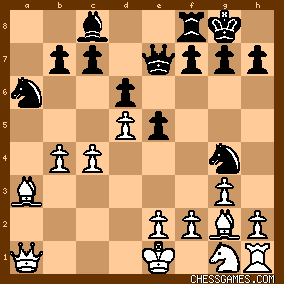
click for larger viewYour King is stuck in the center and your KN and KR are undeveloped. Black is planning to storm your undeveloped position. What would you do?
Almost all players would choose a plan that would quickly jump out the Knight and inevitably lead to White castling on the Kingside. Not the amazing Capablanca! He intuitively knew that his King was far safer left uncastled in the center. Instead he developed his rook to the center in front of his King via 22. Rg1 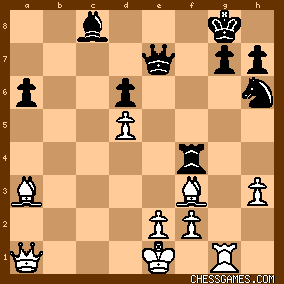
click for larger view24. Rg3
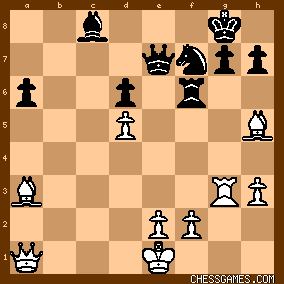
click for larger viewand
25. Re3
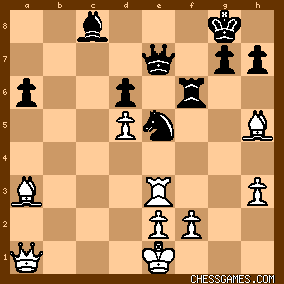
click for larger viewand won by totally dominating the center.
By 29. Bb2, the position had radically changed to favor White who now indeed totally dominated the center. 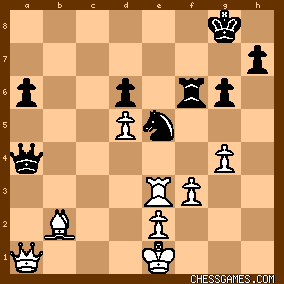
click for larger viewThe change of position from 13...Ng4

click for larger viewto 29. Bb2 comes about so smoothly as to be almost magical 
click for larger viewNotice that in the latter position, White has fully developed his previously locked-in Rook and all his pieces are piling on the e5 square, giving him the clear advantage. His King, still stranded in the center, is perfectly safe behind his Rook and unmoved KP. In this game, Capablanca, as usual, commences with no opening advantage at all. In fact, he himself admits that he misplayed the opening <In the opening......I had a moment of mental forgetfulness and omitted to play an elementary move; as a result, for a long time I was unable to mobilize my king's rook and knight or to castle.> What carried the day for him was his imaginative middlegame play as usual. |
|
| Oct-25-11 | | Sularus: Pawn islands vs a pawn chain.
Here, black has one pawn that is a passed pawn.
I wish I could correctly evaluate the position for such cases where it's pawn chain vs pawn islands with a passed pawn. I think in this game, if the position was presented to me after white's 23rd move, and without knowing the result and the players, I would pick black's position just because of that passed pawn. I probably will never have that skill of evaluating such positions correctly if I live to be a hundred. |
|
Nov-23-15
 | | Jonathan Sarfati: <visayanbraindoctor>, your comment was quoted (with attribution and approval) in Sanchez' comprehensive biographyon Capablanca, p. 454. I received my copy only today (it was published only this year), so have not yet checked out the extensive section on Capa's health problems and death. But from what I've seen so far, you have been right on the money about his familial hypertension causing problems a lot earlier than most people have realized. |
|
Nov-23-15
 | | Jonathan Sarfati: Sanchez quotes Capa as saying that he had a mental lapse and forgot to make a move that would have enabled castling. |
|
| Dec-21-16 | | crwynn: 13...e4 is perhaps an example of what capablanca meant in saying a stronger player would've punished his opening carelessness. The idea is to play ...ng4 just as in the game, but this time to put it on e5. Then he follows up with ...bf5 or ...f5 as appropriate. 13...e4 14.e3? ng4 leaves white very weak on c4, d3 and f3 so 14.qd4, qc3, or nh3 seem like the best options. |
|





